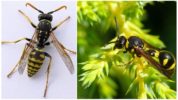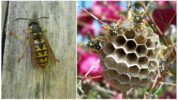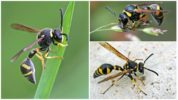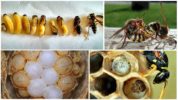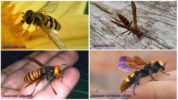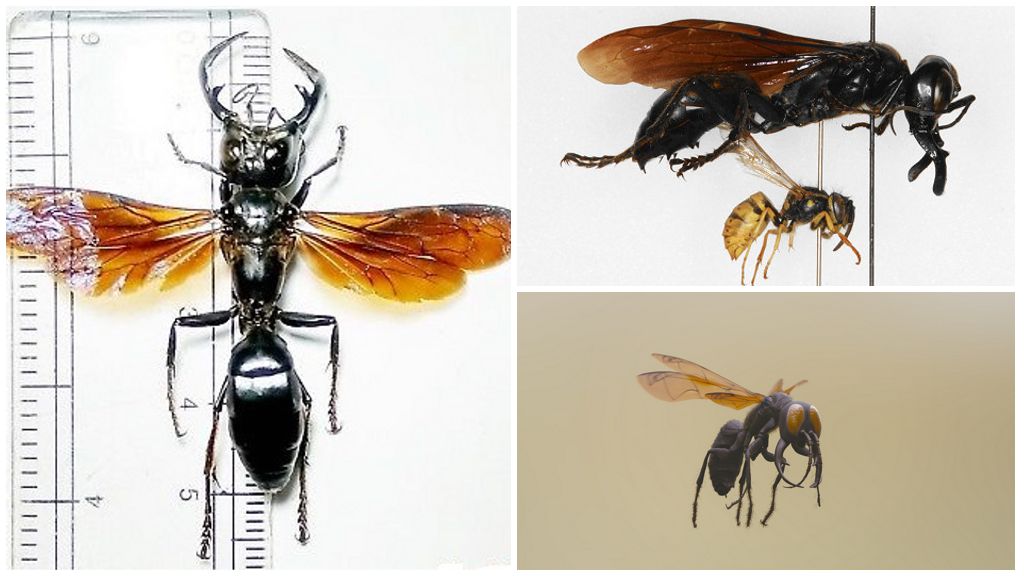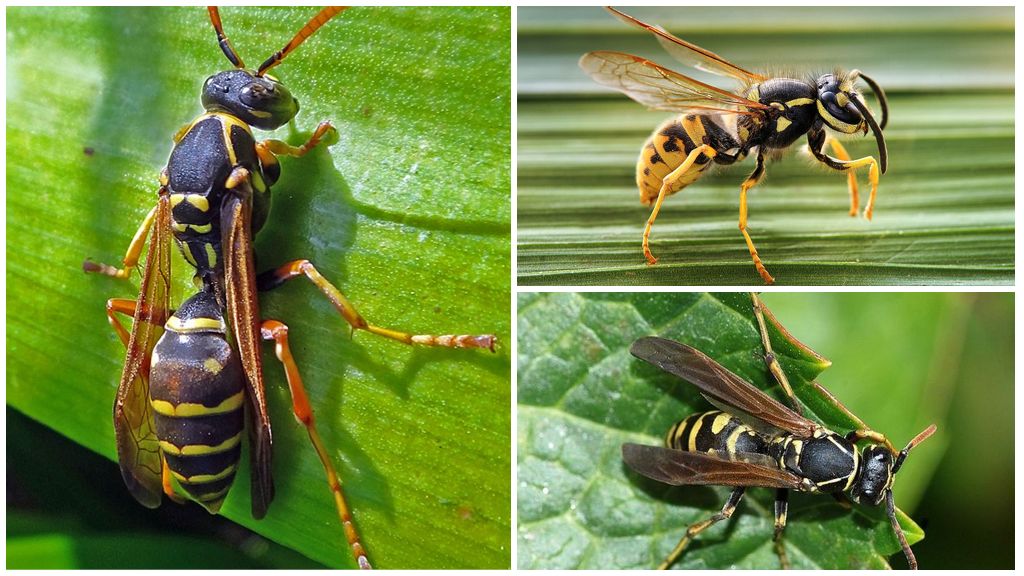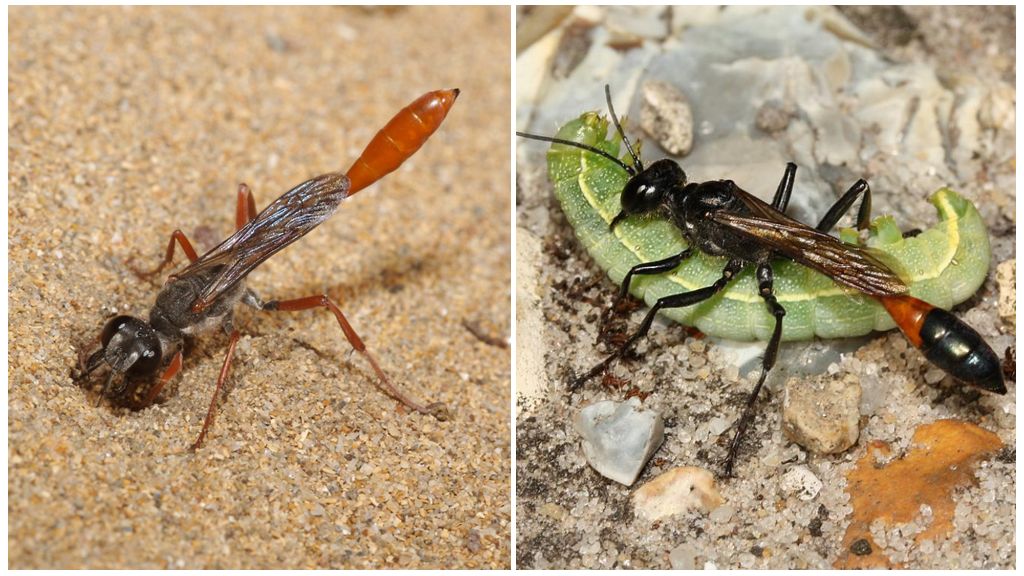- Common wasp
- Public wasps
- Single wasp
- Breeding wasps
- Varieties of wasps
Photos of wasps can be seen in any biology textbook, on websites on the Internet, in informational publications. The common wasp is found everywhere, characterized by a bright striped yellow-black color, small antennae, long transparent wings. Wild wasps often settle on the dacha, land of a person. Build nests in the ground, in the trees, under the roof, in the attics, balcony. However, in the world there is a huge variety of wasps that differ in color, body structure, strength of poison, behavior.
Wasp anatomy
Hymenoptera is the largest, evolutionarily developed group of insects. It includes 155 thousand species.
A characteristic feature of insects of this species is the presence of a thin stalk between the abdomen and sternum. The people even came up with the concept of "wasp waist." The body is standardly divided into 3 parts - head, chest, abdomen. In different species, the color is different, but almost always there are black, yellow, orange colors.
Another distinguishing feature is the special wings. Thin, transparent, with clearly visible veins. The rear is always smaller than the front. Shimmer in different colors or colorless. Often there is a beautiful purple tint. The wasp paws consist of 5 segments. Perform walking, grabbing, digging functions.
The mustache on the head is of various shapes and lengths. Perform the function of a landmark, catch sounds, smells. Clearly visible eyes. Powerful jaws do not contain teeth, but are so hard that they can bite through the insect's chitinous cover.
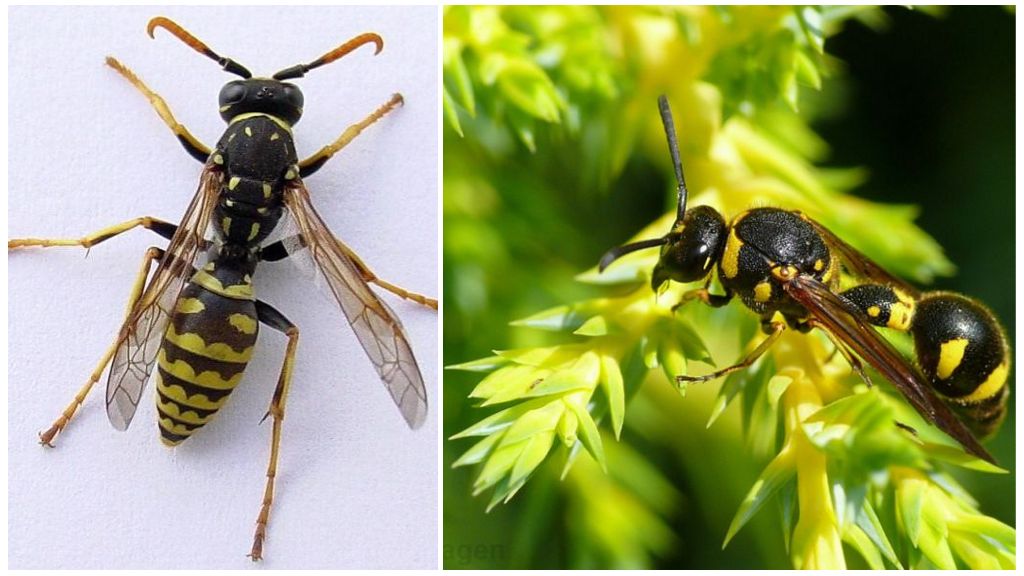
Insect wasp has sting, which is hidden in the lower abdomen, is a modified ovipositor. Only females have the ability to sting. The sting in the form of a needle is connected to the gland, where poison of various toxicities is synthesized. It is used by insects for defense, protecting nests, cubs, to immobilize the victim.
Interesting!
Homosexual individuals differ in body size, organ structure. Biggest wasp in the world belongs to the female genus, reaches 55 mm in size. It belongs to the species of chines, lives in countries with a warm, tropical climate, some species are found in Russia, the countries of the former CIS.
What the wasp looks like can be seen in the photo below. Larvae differ significantly in appearance from adults. These are worm-shaped caterpillars of off-white color. They feed on protein foods and are predators.
Varieties of wasps
The main classification divides these insects into 2 large groups.
Public wasps
They can be called in different ways, including paper. They form numerous families with up to 1 million individuals. They build nests of different sizes. The standard hive has the size of an apple, the largest - 60 cm in diameter. The image of the photo can be seen below.
There is a clear division into castes. Individuals communicate among themselves with sounds, signals. At the head of the family is female uterus, which is engaged in the reproduction of offspring.Some species of wasps include several prolific females in one hive, but they do not claim to be the queen, they simply help to increase the number of members of the aspen society. Wasp close-up further.

Single
They differ in primitive behavior, each individual lives separately. There are no nests, as such, there is no swarm. Most of them are predators. Eggs are laid on the abdomen of the larvae of large beetles, spiders, etc. The larva develops independently, eating the victim from the inside. At the end of the stage, pupates, it remains in this form to winter. In the spring, adults appear. Poison some solitary wasps are extremely toxic bite compared with piercing the skin with a hot nail. Photos with the names can be seen further.
On a note!
Public wasps are often called paper, wood, because their nests are similar to a cocoon woven from toilet paper, and nests are built on a tree, under the roof of wooden buildings, an attic, hollows, old stumps. Single wasps include sand, digging, road. Among them there are quite harmless, useful creatures, parasites, killers.
Wasps are widespread in Russia. Among them there are polystyrene, vespin, chipped, road, typhus, sand.
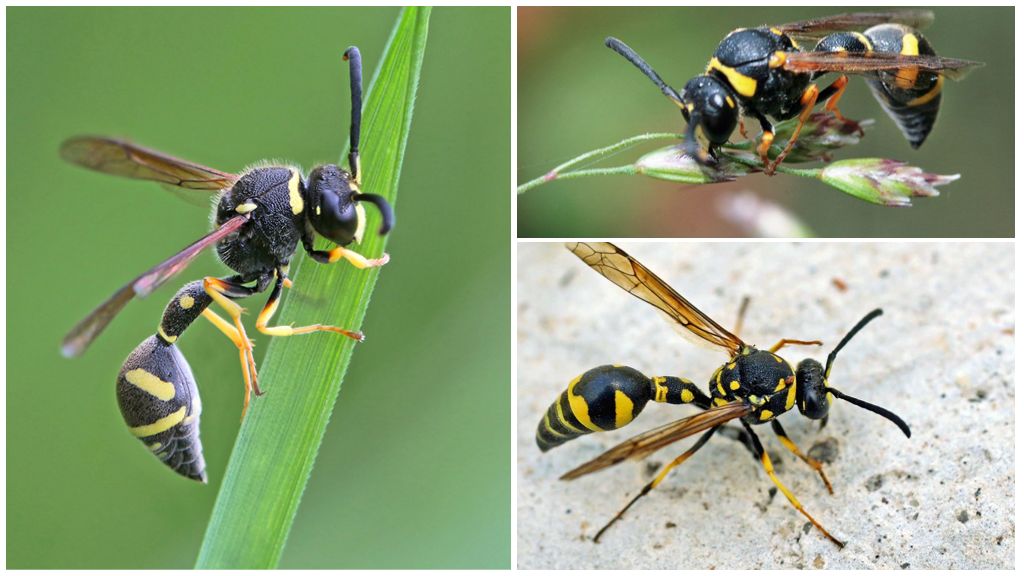
Life span
Life expectancy for different species, sexes is different. The male wasp acts as a male fertilizer. Soon after mating, it dies. On average, a male wasp lives for 14 days.
Fertile females are called the uterus, the queen. Social uterus lays the foundation for a future nest, chooses a suitable place, and exclusively reproduces offspring. The uterus of ordinary wasps lives a year. Dies with the onset of persistent cold. Fertilized young females overwinter in wood, intensify their activities in the spring. Other species in countries with warm climates may live a few years.
On a note!
Most of the hive of public wasps are females, not ready for mating - working individuals. They perform various functions of building a nest, finding food, feeding larvae, protecting the hive, etc. A working individual lives from 1 to 2 months.
Life Cycle - Reproduction
Wasps lay eggs in the hive or in a special burrow underground, where the paralyzed victim is pre-pulled.
Life cycle of public wasps
Uterus lays eggs into separate cells. Initially, she takes care of the offspring herself, gets food. After the appearance of the first generation of working individuals, it discards all the duties of building a nest and caring for the larvae on them.
Wasp larva appears in a few days. Looks like a worm. It has a good appetite and is growing rapidly. It feeds on protein foods, insects drag them bugs, spiders, flies, larvae, pieces of meat. Within 14 days, the young individual passes several molts, increases in size, and pupates at the end. Gnawing a cocoon, an adult comes out. The entire life cycle takes up to 20 days. The maximum activity of the family in our territory is observed in the summer.
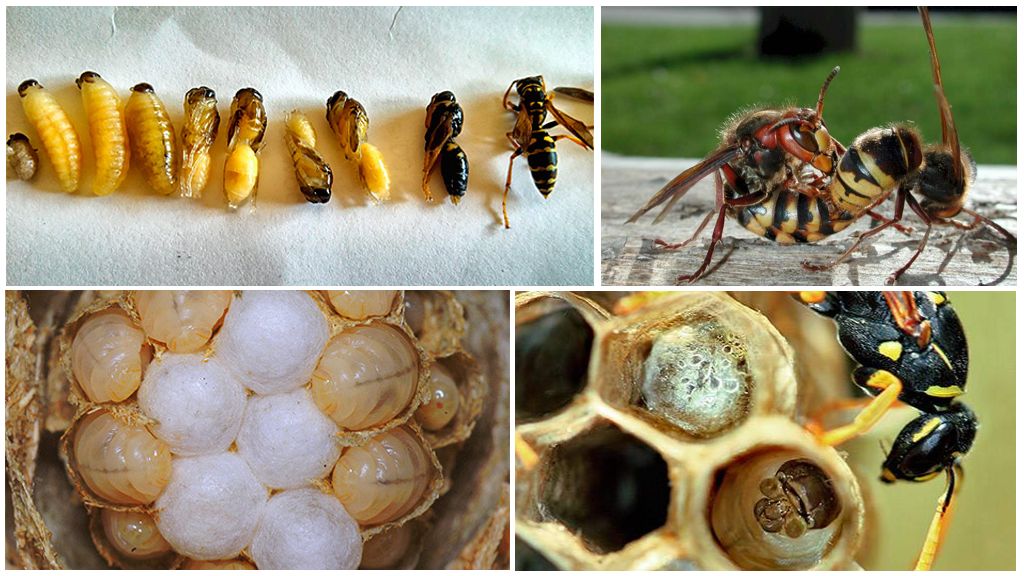
Single Wasps Life Cycle
Engaged in the reproduction of offspring is not so intense. The peak of activity falls in the second half of summer. The female buries herself in the ground, searches for a potential victim, paralyzes. Draws her into a special hole, lays an egg, gets out, bury the entrance. That is where her mission ends. For each larva, the female searches for a new victim, digs a separate hole. In a cocoon, the larva hibernates, is born in early spring. The life of a wasp in the adult stage does not exceed 5 months.
Where do insects live?
Types of public representatives build nests, form a hive. Equip a place of residence in the territory where there is building material, food. Often a favorable place is abandoned nests, burrowing rodents, anthills. As well as ordinary grass, dense crowns of trees, bushes, stones, mounds of soil.They can settle on the territory of human possessions - a garden, a vegetable garden, farm buildings, a roof, an attic, balcony. Wasps in the hive spend the whole summer, with the onset of cold weather they leave the nest. Only young fertilized females survive, who seek shelter for wintering under the bark of trees, crevices.
Single representatives live in the wild, spend the night with their jaws, paws on the grass. Climb into the flower. It is impossible to determine their exact location, since it is constantly changing.
All about wasps - interesting facts

Individual specialists are engaged in studying the life of wasps, and ordinary people continue to amaze ordinary people with interesting facts.
- Little wasp. They are representatives of public, ordinary species. The body length of the female reaches 20 mm in size. Drones, working individuals, males - about 18 mm.
- Wood wasp. Includes many varieties, has a bright black and orange color. The range of sizes ranges from 10 to 60 mm. The most dangerous representative of this kind is hornet, which can be distinguished by large dimensions. An interesting representative is the synodic wasp, about which there is extremely little information.
- Asian hornet. The most dangerous wasp. In China, Japan annually 50 people die from bites, according to official statistics. For an allergy sufferer, one bite of a giant killer pest can be fatal. The size of the hornet reaches 5.6 cm.
- Great spotted scoli. This species is the most beautiful representative of large wasps. The body size of the female is 55 mm, the male is 32 mm. Lays larvae on the body of larvae of May beetles, rhino. Leads a primitive, solitary lifestyle. Despite its impressive size, it is safe for humans. The consequences of a bite are numbness.
- Germans. Outwardly wingless fluffy females resemble an ant. Body size does not exceed 30 mm. The female has a bright color, males of this type of brown tones. They do not build their own nests; they parasitize in the hives of bees and other wasps.
In the world there are extremely many representatives of this species of Hymenoptera, each of them is unique, has its own characteristics.
Enemies of wasps
Despite serious stinging poisonous weapons, wasps are often attacked by other insects and become victims of birds and mammals.
- Ruining nests left without an uterus ants. Weak, sick individuals may become the victims of these insects.
- The fanfare is paradoxical. The beetle makes its way into the hive, the mink of earthen wasps, lays eggs. Larvae develop on the body of young wasps.
- Hornets. The most formidable enemy of the aspen family are the killer wasps themselves, which have a significant advantage in size and size. Hornets completely ruin a family in one attack.
- Wasp beetles are engaged in hunting wasps. They feed the chicks with adults, larvae.
In late autumn, the activity of the aspen family decreases, they become slow, inactive. Become victims of insects, many birds. In early spring, under the stumps, barks are searched for insects by bears.
